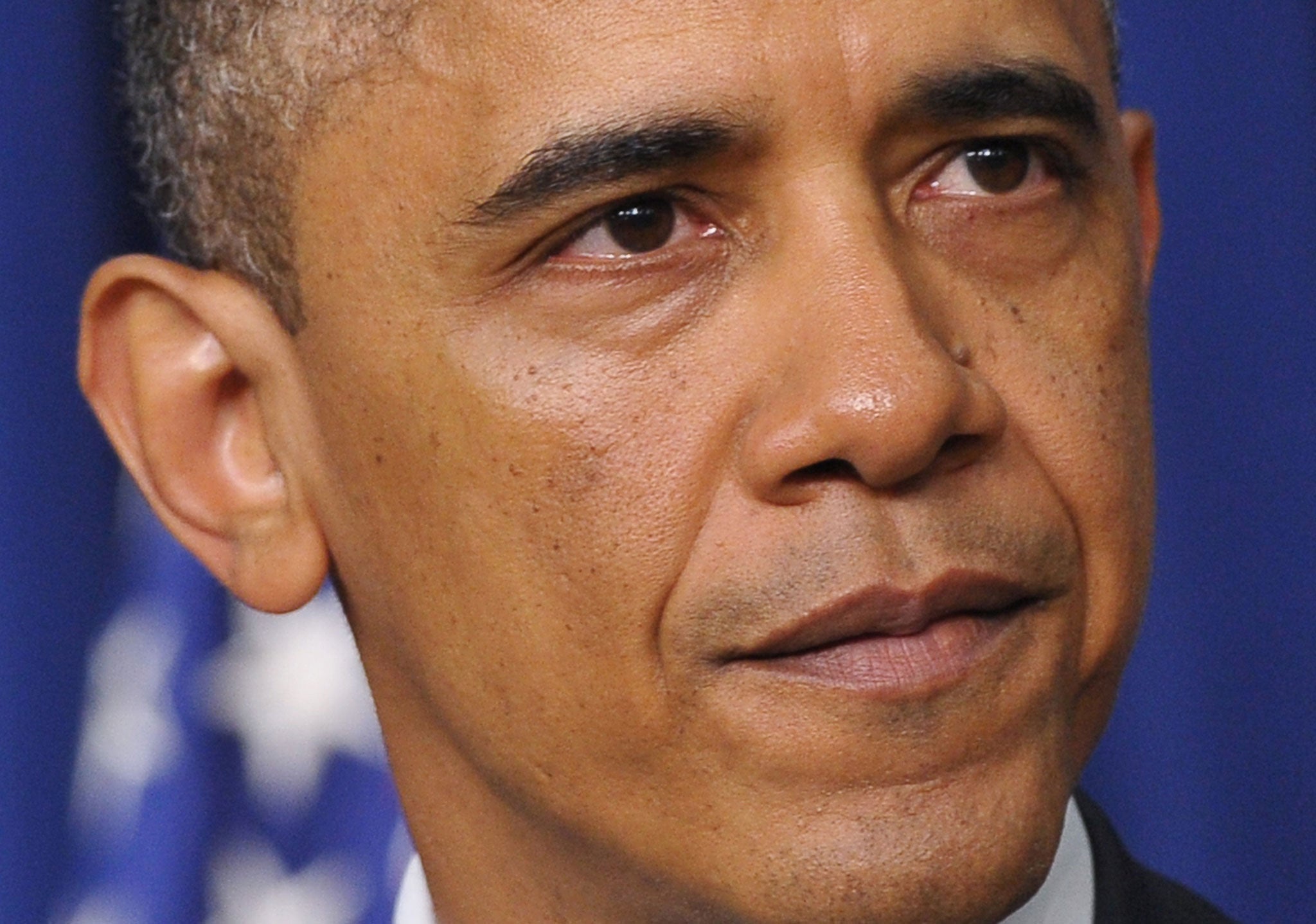Why today’s American presidents need a third term
Roosevelt's four terms put many off the idea, but an eight year limit - with the distraction of a re-election campaign midway - is short by international standards


Your support helps us to tell the story
From reproductive rights to climate change to Big Tech, The Independent is on the ground when the story is developing. Whether it's investigating the financials of Elon Musk's pro-Trump PAC or producing our latest documentary, 'The A Word', which shines a light on the American women fighting for reproductive rights, we know how important it is to parse out the facts from the messaging.
At such a critical moment in US history, we need reporters on the ground. Your donation allows us to keep sending journalists to speak to both sides of the story.
The Independent is trusted by Americans across the entire political spectrum. And unlike many other quality news outlets, we choose not to lock Americans out of our reporting and analysis with paywalls. We believe quality journalism should be available to everyone, paid for by those who can afford it.
Your support makes all the difference.What a difference four years make. When Barack Obama delivers his second inaugural address, as he will on the Washington Mall on Monday, he will do so confident that he is hitting the ground running. Not only is his new top team already in place, subject to Congressional confirmation, but his speech on gun control this week broached a theme that could define his second term – perhaps even his presidential legacy.
At the same time, though, his address is bound to be tinged with regret – regret shared by the majority that elected him. The Democrat whose victory in November 2008 represented a breakthrough for the United States in so many ways is more than halfway through his time in power. And while a second term frees him from many of the constraints that curb the ambitions of all first-term presidents, the sense already lurks that his presidential promise is only starting to be fulfilled.
Which prompts the thought that perhaps the time allotted to a US president is too short. Five years – the fixed term chosen by the UK Coalition – is more usual. But the whole of the US electoral system is predicated on multiples of two years. So perhaps a more American way to extend a president’s time in office would be to set the limit not at two, but at three, four-year terms. The choice of an additional term would then rest with the voters.
Reluctance
Americans, of course, have a specific aversion to the very idea of a three-term presidency, which derives for some from the memory, and for others from the folklore, of the last – and only – time a president served more than two terms. Franklin Roosevelt won a third term on the back of his largely successful measures to rebuild America after the Great Depression. He won a fourth term, as a war leader, in 1944, when he was already seriously ill, dying in office only five months later. Some believe his physical weakness affected his judgement and compromised the US negotiating position at Yalta, where the post-war carve-up of Europe was agreed.
Quite apart from this particular American experience, there is the general reluctance of voters in democracies to make it easier for a national leader to stay in power. Few want the sort of headlines that followed Russia’s decision to extend the presidential term from four to six years, which was widely seen as a stratagem to give Vladimir Putin almost indefinite presidential power. The trend in recent times has been to reduce rather than prolong tenure, as Jacques Chirac did in 2000 when he reduced the French presidential term from seven years to five.
Yet there are compelling reasons why two four-year terms may not be enough for a competent and popular US president today. The first, and most obvious, is that a maximum eight-year lease at the White House is short by international standards. Ten years, made up of two five-year terms is significantly longer than even the most popular American president enjoys. Add the inordinate time that any first-term US president seeking re-election must spend fund-raising and campaigning, and the time at his disposal is even shorter.
The second is the extent of institutional change that attends the arrival of a new president. For individuals with the background and lineage of the two George Bushes, this might be less of a challenge than for others. They were already steeped in the politics and culture of Washington. Plausible members of their administration were to be found, office-ready, in their immediate circles. They were relaxed in an environment of power.
But by no means all new presidents are in this position, even if they have served in Congress. Bill Clinton came to the White House straight from the governor’s mansion in Arkansas. Obama ran for President just half-way through his first term as a US Senator. Ronald Reagan and Jimmy Carter came from their home states. And while non-Washington roots have much to recommend them, a president without capital connections is at a disadvantage.
A new president has not only to appoint the equivalent of a Cabinet, but to nominate people for posts that in Britain and most other countries are staffed by professional civil servants. As recent debate in the UK has shown, an apolitical Civil Service can be a liability for a government intent on change, but the value of continuity and experience is not to be underestimated. This is something a new US administration, to its detriment, often lacks.
"Smart" power
Both Obama and Clinton were slow to complete their first-term appointments, fumbling early policies and leaving key embassies unstaffed. Hillary Clinton may have succeeded at the State Department in part because she already had all the essentials at her fingertips. With policy towards Iraq and Afghanistan, however, on which Obama had clear campaign pledges, he seemed unsure, seeming to be buffeted by competing influences. Cruel though it might sound, the death of Richard Holbrooke and the disgrace of David Petraeus may have been blessings in disguise.
Obama’s second-term administration already has quite a different feel – one more in tune with the character and priorities of his first campaign. His foreign policy team – John Kerry at State, Chuck Hagel at Defence, and John Brennan at the CIA – hint at what a second-term Obama might be contemplating in the exercise of US “smart” power. If the withdrawal from Afghanistan is seen as a focus of the next few years, though, the limits of a two-term president are also clear. This may be Obama’s crowning achievement, but in a way it is where his presidency should have begun. Rebuilding the economy, actually implementing healthcare reform, perhaps tempering America’s love of guns, are all long-term propositions, regardless of how helpful – or not – Congress may be.
The United States is a big country and a rich country, with true global reach, but even its highly developed federalism cannot offset the four- or eight-yearly spasms at the top. Clinton would have sailed to a third term; Obama might not be similarly placed, but even if he is, he will not get the chance. The two-term limit for president dates only from 1951. More than half a century on, Obama should set out to amend it to three terms for his successors – in the interests not just of the United States, but of the world.
Join our commenting forum
Join thought-provoking conversations, follow other Independent readers and see their replies
Comments